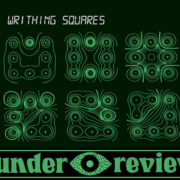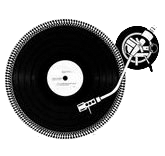Matt Lajoie on Lula Côrtes e Lailson – Satwa 

Over the years Matt Lajoie has shown up here under many names — with psych folk searchers Herbcraft, alongside his partner in Ash & Herb, traversing folk under his own name, honing kosmiche waves in Starbirthed and Eastern enclaves as ML Wah. He’s back under his own name with one of the most blissful offerings in his vast catalog this year, but before that graces the waiting turntables, Matt sat down to pick out record that’s been lost to the ethers for Hidden Gems. Matt picked Lula & Lailson’s 1973 album psychedelic opus Statwa. Check out how this one came into his life and the imprint it left on him and his own writing below and nab a pre-order of the entrancing new LP Everlasting Spring.
“The one-off 1973 Brazilian underground masterpiece Satwa entered my awareness at what would prove to be the most pivotal moment in my life as a musician,” recalls Lajoie. In the winter of 2005 I was in my final semester of college, recording a lo-fi experimental folk album in my dorm room and eager to meet folks from the local music community in and around Portland, Maine. I pitched an independent study to my music professor, wherein I would find a local record label to intern at for a few months, study the mechanisms and philosophies of independent labels within the greater music industry, and create a multimedia presentation of my findings at the close of the year. I was especially fascinated by the enigmatic local vinyl and CD-R label-slash-distro Time-Lag Records, and approached label-head Nemo with the offer. He accepted, and in turn graciously introduced me to a previously-hidden international network of experimental music fans, fiercely underground DIY micro-labels, and artists creating far outside the box – a community that I instantly aspired to share my own music with.”

“In addition to releasing new artists like Espers, MV & EE, Six Organs of Admittance, and Wooden Wand,” continues Matt, “Time-Lag was also one of the earliest deluxe vinyl reissue labels to give second life to the kinds of records this Hidden Gems feature focuses on. It’s difficult to remember what the extent of my Brazilian music knowledge was at the point that Nemo brought Satwa back into the light in 2005 as the first project of my internship. I was familiar with a few Tropicália and bossa nova stars, and perhaps Os Mutantes had filtered into my consciousness. None of these prepared me for the subtly stunning harmonic interplay of Lula Cortes and Lailson: ten cuts of East-meets-West instrumental duo-wander, punctuated briefly by a couple wordless vocal incantations and one seriously incandescent electric guitar solo by guest shredder Robertinho do Recife on highlight “Blue do Cachorro Muito Louco” (translation: “Very Crazy Dog Blues”). Lailson provides the chordal and rhythmic framework on his 12-string acoustic guitar, while Cortes plays freely in both alap and jhala style on what Lailson calls ‘the popular Moroccan sitar’ in the liner notes included with the Time-Lag reissue. He describes the music as ‘a blend of folk Brazilian themes, Hindu-like music and rock ‘n’ roll’ – this is a record that comes about its psychedelic aura naturally, through synthesis and cross-pollination as well as real-life experience (Cortes had just returned from Morocco as had Lailson, the United States), and Lailson goes so far as to dub Satwa ‘world music’.”
“This style is so unique that it suggests plenty of pre-studio planning and preparation, and yet the record’s great success (and possibly most lasting impression on my own music) is in sounding like the best possible casual jam session. It’s two acoustic string players complementing each other in a novel yet familiar-sounding way, composed and improvised in equal measure, and presented in a fidelity I could approximate on my cassette Portastudio.” marvels Lajoie. “I’ve never set out to make a record that explicitly sounds like Satwa, but the playing and production has seeped into my subconscious to such a degree that I’m confident everything I’ve recorded since 2005 would sound different if Lula and Lailson’s one-off session had never survived beyond the studio flood that claimed its master tapes in 1975 (Time-Lag’s reissue had to be sourced from Lailson’s own personal vinyl copy of the original pressing).”
“This hidden gem, regarded as Brazil’s first independent record, could have easily remained lost forever, and when I think about the different path my music likely would have taken without Satwa I recall the cover art’s abstracted moth and its wing-flap significance. It makes me wonder which records being made today—in an age of instant international distribution of even the most underground recordings—could possibly still be falling through the cracks, holding the potential to make a cultural impact in another generation or two. Perhaps music made clandestinely under a military dictatorship, just as Satwa was almost 50 years ago. Lailson’s liner notes reference ‘a leap through time’ and he calls the record ‘our intertemporal spaceship’, and this, in the end, is the greatest inspiration I could ever glean from Satwa, Time-Lag, and hidden gems in general: once you can to view your audience as existing outside your current time and place—even outside of your plane of experience entirely—the freedom to create without borders or limits breeds endless inspiration.”









